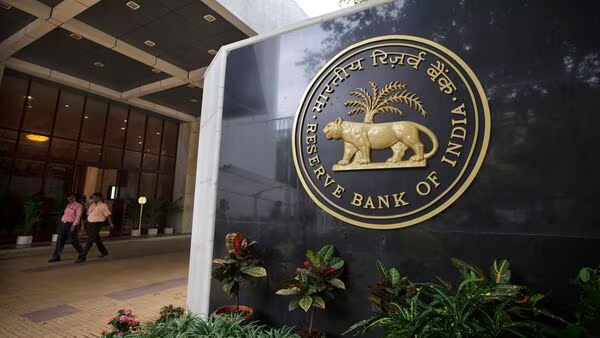
Introduction
The Reserve Bank of India (RBI), India’s central bank, plays a crucial role in maintaining the economic stability of the country. One of its most vital functions is formulating and implementing the Monetary Policy. In 2025, with the global economy going through a dynamic shift post-pandemic and inflationary pressures still looming, the RBI's monetary decisions are more important than ever.
What is RBI’s Monetary Policy?
rbi monetary policy refers to the set of actions taken by the Reserve Bank of India to regulate the supply of money, interest rates, and availability of credit in the economy. Its primary aim is to ensure economic growth, price stability, and financial stability.
Every two months, the Monetary Policy Committee (MPC) meets to review the current economic situation and decide on key rbi monetary policy rates like the repo rate and reverse repo rate. These rates have a ripple effect on loans, deposits, investments, inflation, and overall economic health.
Objectives of RBI’s Monetary Policy
- Price Stability: Controlling inflation and maintaining stable prices is the primary goal of monetary policy.
- Economic Growth: Supporting GDP growth through favorable interest rates and liquidity measures.
- Financial Stability: Preventing liquidity crises and maintaining confidence in the banking system.
- Employment Generation: Indirectly promoting job creation by facilitating business growth and investments.
- Exchange Rate Stability: Managing foreign exchange markets to avoid volatility in the rupee’s value.
Types of Monetary Policy
- Expansionary Monetary Policy: Used during economic slowdown or recession. rbi monetary policy lowers interest rates and increases money supply to stimulate demand and investment.
- Contractionary Monetary Policy: Used when inflation is high. RBI increases interest rates and reduces liquidity to control price rise.
Key Tools of RBI’s Monetary Policy
1. Repo Rate
Repo rate is the rate at which rbi monetary policy lends money to commercial banks. A reduction in the repo rate makes borrowing cheaper, encouraging banks to lend more to businesses and consumers. In contrast, an increase in repo rate makes borrowing expensive, which helps control inflation.
2. Reverse Repo Rate
This is the rate at which the rbi monetary policy borrows money from banks. It helps absorb excess liquidity from the banking system. When the reverse repo rate is high, banks prefer to park their funds with RBI instead of lending, thereby reducing money supply in the economy.
3. Cash Reserve Ratio (CRR)
Banks are required to keep a certain percentage of their deposits as reserves with the rbi monetary policy. Increasing CRR reduces the amount banks can lend, thereby controlling liquidity and inflation.
4. Statutory Liquidity Ratio (SLR)
It is the minimum percentage of deposits that banks must maintain rbi monetary policy in the form of liquid assets like cash, gold, or government securities. Changes in SLR affect the money available for lending.
5. Open Market Operations (OMO)
RBI buys or sells government securities in the open market to control liquidity. Buying securities infuses money into the economy, while selling sucks out excess liquidity.
6. Bank Rate
The rate at which RBI lends money to banks for long-term requirements. It indirectly affects interest rates and credit availability in the market.
7. Marginal Standing Facility (MSF)
MSF allows banks to borrow overnight funds from the rbi monetary policy by pledging government securities. The rate is slightly higher than the repo rate.
RBI Monetary Policy 2025 Highlights
In the latest policy review held in August 2025, the MPC kept the repo rate unchanged at 6.50%, considering high food inflation and global uncertainty. RBI aims to bring inflation down to the target range of 4% ±2% while ensuring enough liquidity for economic growth.
Key Highlights:
- Repo Rate: 6.50%
- Reverse Repo Rate: 3.35%
- CRR: 4.5%
- SLR: 18%
- GDP Growth Forecast: 6.8% for FY2025-26
- Inflation Forecast: 5.4% (subject to monsoon and crude oil price risks)
Impact of Monetary Policy on the Indian Economy
1. Impact on Inflation
Monetary policy is the key tool to control inflation. By adjusting interest rates and liquidity, the RBI tries to keep inflation within the 2–6% target range. Tight monetary policy helps reduce inflation but may slow down growth temporarily.
2. Impact on Loans and EMIs
Changes in the repo rate affect home loans, personal loans, and EMIs. A hike in repo rate increases interest rates, making loans costlier. A reduction brings relief to borrowers.
3. Impact on Businesses and Investment
Lower interest rates reduce borrowing costs for businesses, boosting investment and expansion. On the other hand, higher rates make borrowing expensive, reducing business activity.
4. Impact on Currency and Forex Reserves
Higher interest rates can attract foreign investors seeking better returns, strengthening the Indian Rupee. RBI also intervenes in forex markets when needed to maintain currency stability.
5. Impact on Stock Market
Loose monetary policy usually boosts stock markets due to improved liquidity and lower cost of capital. Tighter policy may lead to corrections in stock prices.
Challenges for RBI in 2025
- Managing Inflation vs. Growth: Striking a balance between controlling inflation and supporting growth is a delicate task, especially with global volatility.
- Global Economic Uncertainty: Rising interest rates in the US and volatile oil prices impact India’s external trade and inflation.
- Monsoon Dependency: A below-normal monsoon can impact food supply, pushing inflation up.
- Geopolitical Tensions: Conflicts in the Middle East and disruptions in trade routes could influence global commodity prices and supply chains.
Recent Policy Outlook & Future Projections
Experts believe that the RBI is likely to maintain a cautious stance for the rest of 2025. Unless inflation comes down sharply, rate cuts are unlikely. The RBI is also exploring digital currency innovations and enhancing transparency in the policy communication process.
As India moves towards becoming a $5 trillion economy, the RBI’s role in creating a stable monetary environment becomes even more crucial.
Conclusion
RBI’s Monetary Policy is more than just a tool to control inflation or regulate liquidity—it is the backbone of India’s macroeconomic stability. Whether you are a business owner, investor, salaried individual, or student, the decisions taken by the RBI influence your financial well-being. Staying updated with these policies News helps you make informed financial decisions and prepare for the future.
With the global economy still facing turbulence, the RBI’s prudent monetary management in 2025 will be instrumental in driving India’s growth story forward.
FAQs on RBI Monetary Policy
Q1: How often does RBI announce its monetary policy?
The RBI announces its monetary policy every two months (bi-monthly).
Q2: Who decides the repo rate in India?
The Monetary Policy Committee (MPC), a six-member panel, decides the repo rate.
Q3: What is the current repo rate in 2025?
As of August 2025, the repo rate is 6.50%.
Q4: How does monetary policy affect inflation?
By increasing interest rates, the RBI reduces demand in the economy, which helps lower inflation.
Q5: What is the difference between CRR and SLR?
CRR is the cash banks must keep with RBI, while SLR is the percentage of deposits banks must maintain in liquid assets like gold and government securities.










